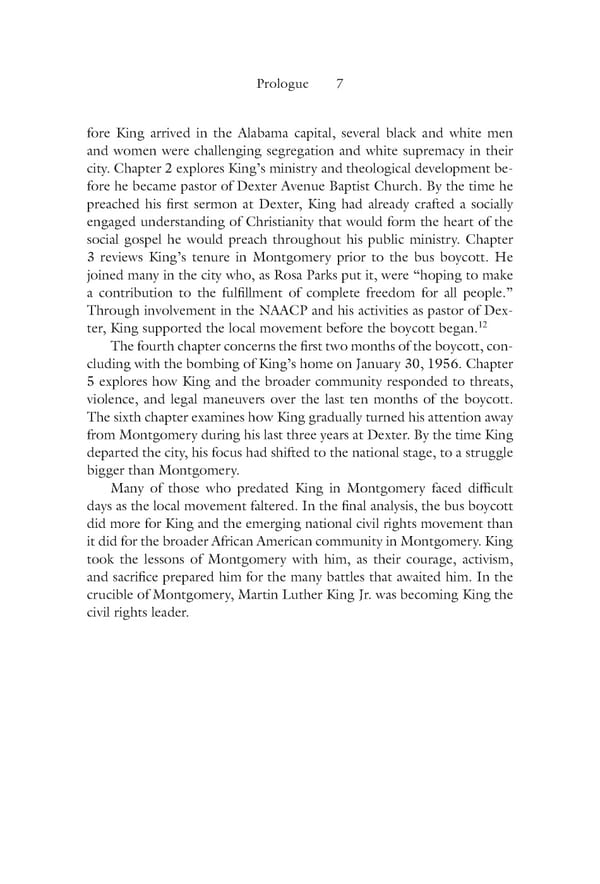Prologue 7 fore King arrived in the Alabama capital, several black and white men and women were challenging segregation and white supremacy in their city. Chapter 2 explores King’s ministry and theological development be- fore he became pastor of Dexter Avenue Baptist Church. By the time he preached his first sermon at Dexter, King had already crafted a socially engaged understanding of Christianity that would form the heart of the social gospel he would preach throughout his public ministry. Chapter 3 reviews King’s tenure in Montgomery prior to the bus boycott. He joined many in the city who, as Rosa Parks put it, were “hoping to make a contribution to the fulfillment of complete freedom for all people.” Through involvement in the NAACP and his activities as pastor of Dex- 12 ter, King supported the local movement before the boycott began. The fourth chapter concerns the first two months of the boycott, con- cluding with the bombing of King’s home on January 30, 1956. Chapter 5 explores how King and the broader community responded to threats, violence, and legal maneuvers over the last ten months of the boycott. The sixth chapter examines how King gradually turned his attention away from Montgomery during his last three years at Dexter. By the time King departed the city, his focus had shifted to the national stage, to a struggle bigger than Montgomery. Many of those who predated King in Montgomery faced difficult days as the local movement faltered. In the final analysis, the bus boycott did more for King and the emerging national civil rights movement than it did for the broader African American community in Montgomery. King took the lessons of Montgomery with him, as their courage, activism, and sacrifice prepared him for the many battles that awaited him. In the crucible of Montgomery, Martin Luther King Jr. was becoming King the civil rights leader.
 Becoming King: Martin Luther King Jr. Page 27 Page 29
Becoming King: Martin Luther King Jr. Page 27 Page 29